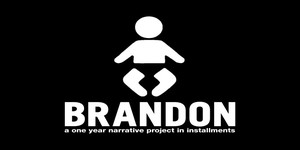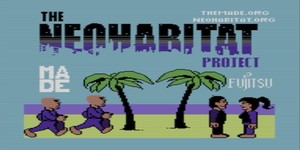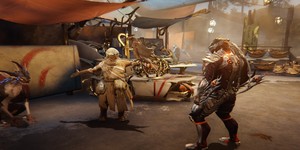Lucasfilm's Habitat MMO brought back to life as Neohabitat
June 2, 2017 | 10:54
Companies: #fujitsu #lucasfilm #the-made

The Museum of Digital Art and Entertainment (The Made) has announced that it is relaunching Lucasfilm Games' pioneering massively multiplayer online role-playing game Habitat, which first hit microcomputers worldwide back in 1986.
Developed by Lucasfilm Games programmer Chip Morningstar and designed by Randy Farmer in partnership with communications specialist Quantum Link, Habitat was the first successful commercial implementation of a graphical large-scale virtual community. Designed to layer a cartoonish graphical interface over the top of technology originally developed for text-based multi-user dungeons (MUDs), Habitat's launch on the Commodore 64 - later being ported to the FM Towns and PCs running Windows and Mac OS - was a stunning success. Beyond its commercial popularity, though, Habitat is historically significant for its pioneering position, being credited with coining the term 'avatar' to refer to a player's character - and fans of the drama series Halt and Catch Fire may recognise it as the basis for Mutiny's similar graphical social platform.
Now, California-based The Made is bringing Habitat back, and you won't need a modem to access it. 'We couldn’t have pulled off the small miracle of this game, then or now, without a lot of collaborators: some original team members returned to help out, like original lead Chip Morningstar, myself, and a few of the 500 1986 Habitat Beta testers who built much of the online world you can see today,' explains Randy Farmer, co-designer of the original title, of his involvement in the four-year project. 'Also, many fans of the worlds/MMOs descended from Habitat and contributors from the vibrant C64 retro gaming community. Our contributors are around the world – and include various tech CEOs, CTOs and VPs. We’d all like to thank The Made for making this project possible: to restore the first MMO, Lucasfilm’s Habitat.'
'Habitat was so far ahead of its time, it was never able to reach even a tenth of the potential of its capabilities due to the future having not been evenly distributed enough at the time,' says Alex Handy, founder and director of The Made. 'Today, we think of thousands of players being in a single world at once as normal, but Habitat built this type of environment 30 years ago with the digital equivalent of sticks and stones.'
The project will see Habitat, now owned by Fujitsu which acquired the rights in order to release the game in Japan for the FM Towns system, rereleased as Neohabitat later today. The game is a true update of the original, based on the same core source code - and, just like Habitat at launch, is exclusively compatible with the Commodore 64 and derivatives. To prevent the need for a modem tied into a physical phone line, though, Neohabitat is designed to be run in an emulator which can simulate a serial-connected modem then transfer the traffic to a remote server over the internet.
Full details on Neohabitat, including how to configure an emulator and begin to play the game along with full source code, can be found on Randy Farmer's GitHub repository.
Developed by Lucasfilm Games programmer Chip Morningstar and designed by Randy Farmer in partnership with communications specialist Quantum Link, Habitat was the first successful commercial implementation of a graphical large-scale virtual community. Designed to layer a cartoonish graphical interface over the top of technology originally developed for text-based multi-user dungeons (MUDs), Habitat's launch on the Commodore 64 - later being ported to the FM Towns and PCs running Windows and Mac OS - was a stunning success. Beyond its commercial popularity, though, Habitat is historically significant for its pioneering position, being credited with coining the term 'avatar' to refer to a player's character - and fans of the drama series Halt and Catch Fire may recognise it as the basis for Mutiny's similar graphical social platform.
Now, California-based The Made is bringing Habitat back, and you won't need a modem to access it. 'We couldn’t have pulled off the small miracle of this game, then or now, without a lot of collaborators: some original team members returned to help out, like original lead Chip Morningstar, myself, and a few of the 500 1986 Habitat Beta testers who built much of the online world you can see today,' explains Randy Farmer, co-designer of the original title, of his involvement in the four-year project. 'Also, many fans of the worlds/MMOs descended from Habitat and contributors from the vibrant C64 retro gaming community. Our contributors are around the world – and include various tech CEOs, CTOs and VPs. We’d all like to thank The Made for making this project possible: to restore the first MMO, Lucasfilm’s Habitat.'
'Habitat was so far ahead of its time, it was never able to reach even a tenth of the potential of its capabilities due to the future having not been evenly distributed enough at the time,' says Alex Handy, founder and director of The Made. 'Today, we think of thousands of players being in a single world at once as normal, but Habitat built this type of environment 30 years ago with the digital equivalent of sticks and stones.'
The project will see Habitat, now owned by Fujitsu which acquired the rights in order to release the game in Japan for the FM Towns system, rereleased as Neohabitat later today. The game is a true update of the original, based on the same core source code - and, just like Habitat at launch, is exclusively compatible with the Commodore 64 and derivatives. To prevent the need for a modem tied into a physical phone line, though, Neohabitat is designed to be run in an emulator which can simulate a serial-connected modem then transfer the traffic to a remote server over the internet.
Full details on Neohabitat, including how to configure an emulator and begin to play the game along with full source code, can be found on Randy Farmer's GitHub repository.

MSI MPG Velox 100R Chassis Review
October 14 2021 | 15:04









Want to comment? Please log in.